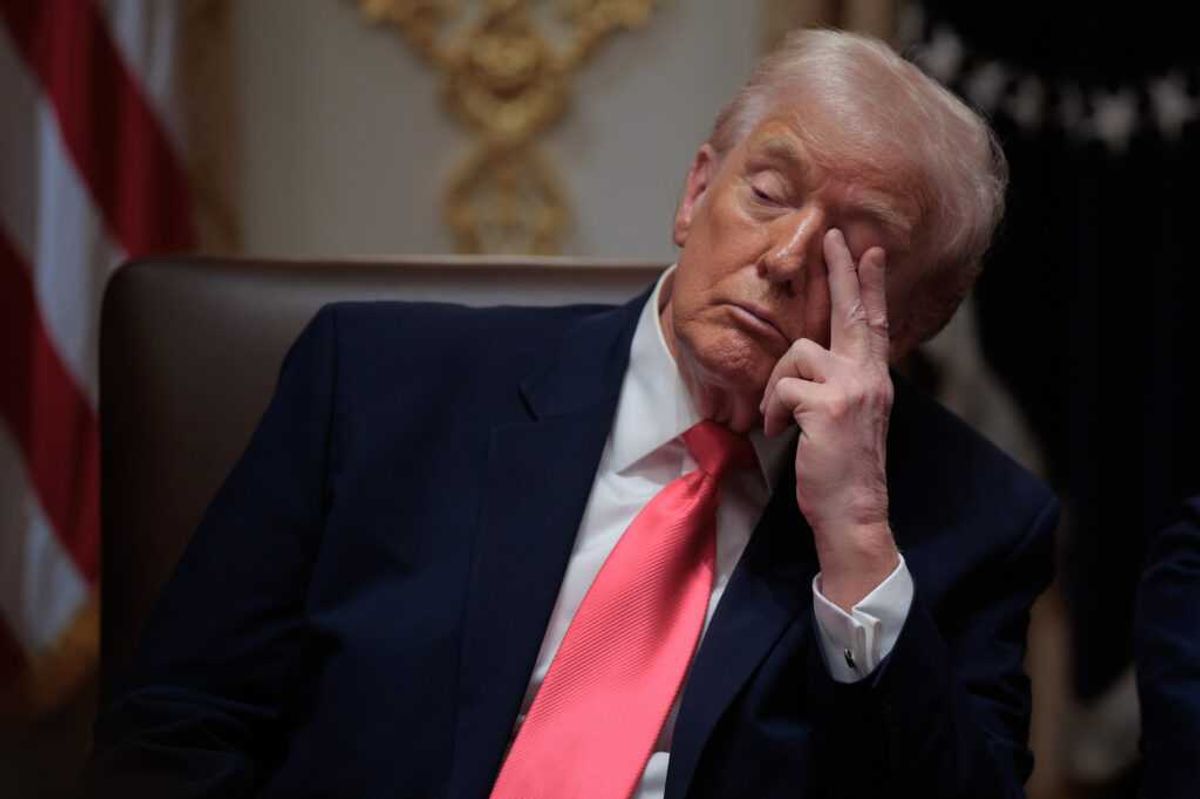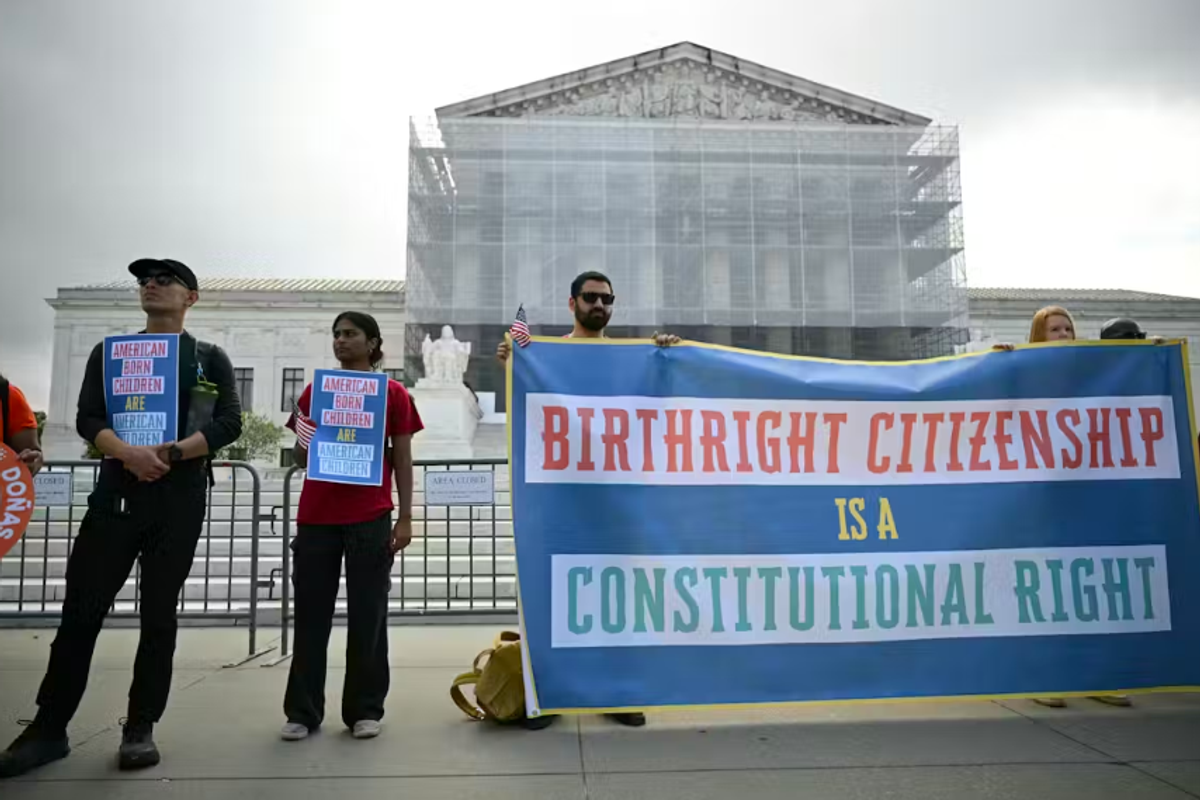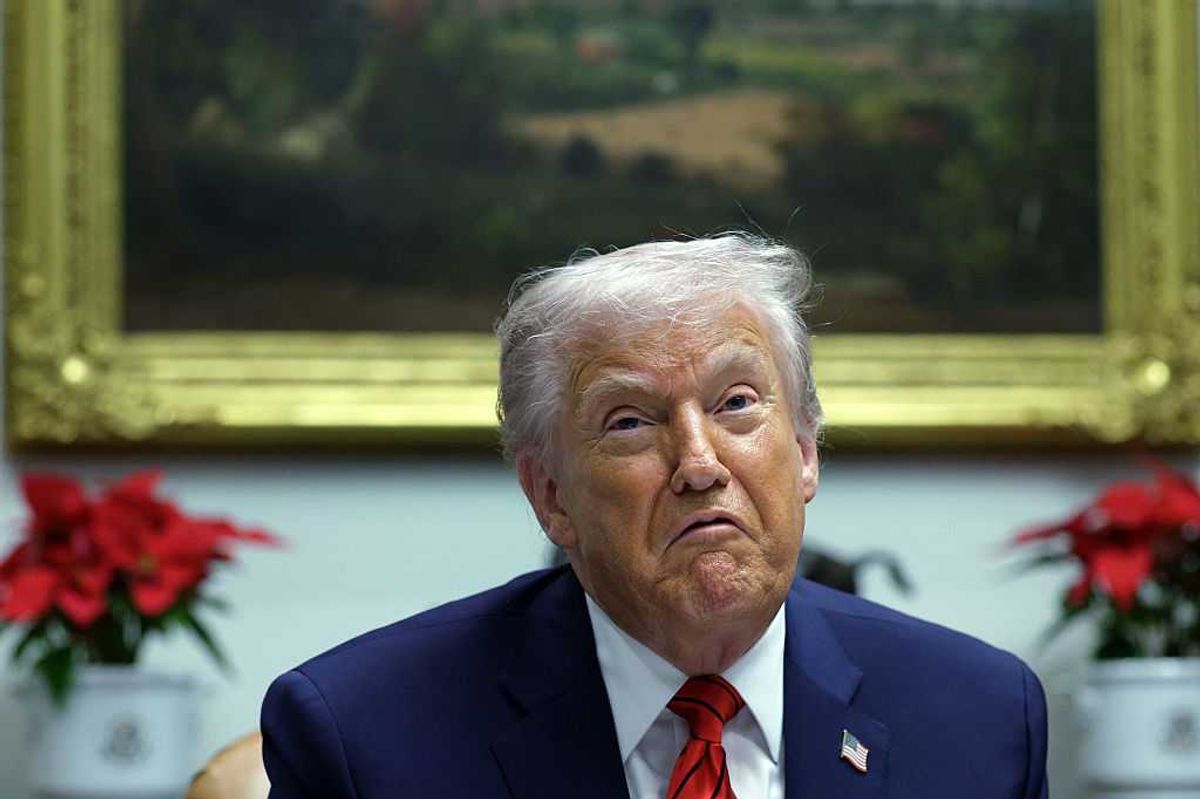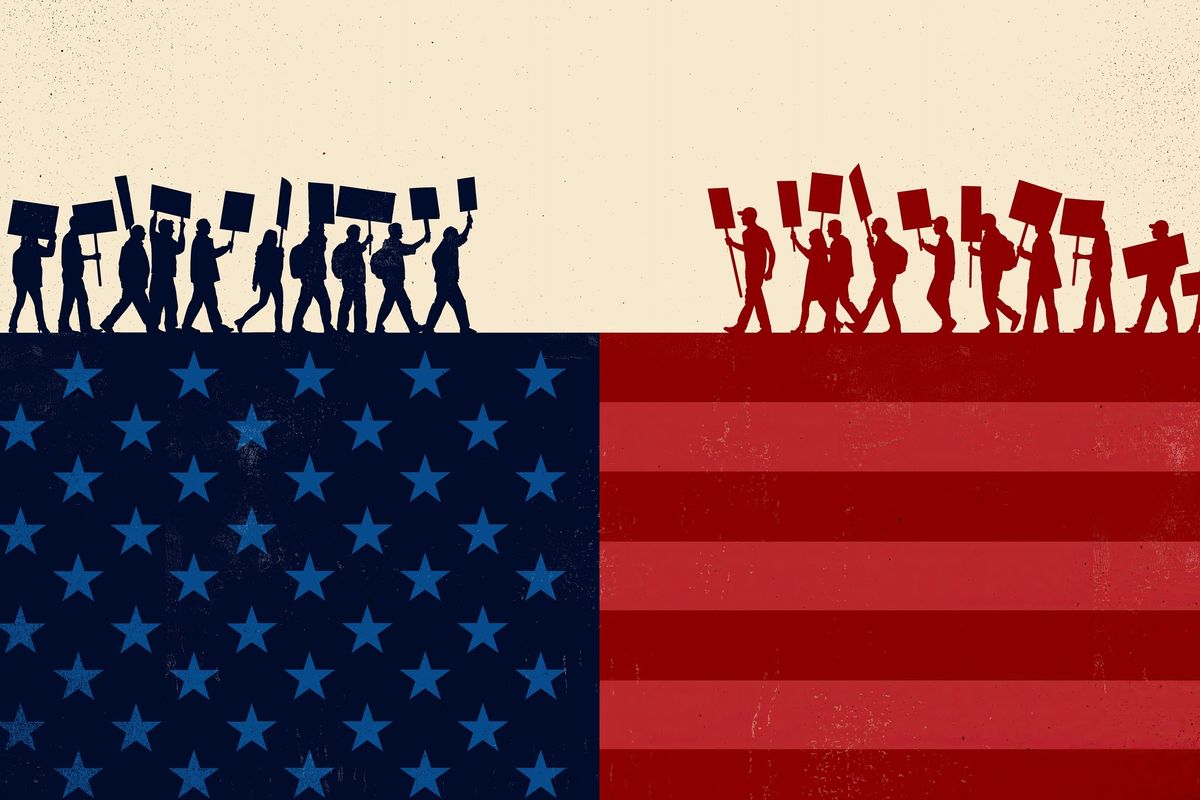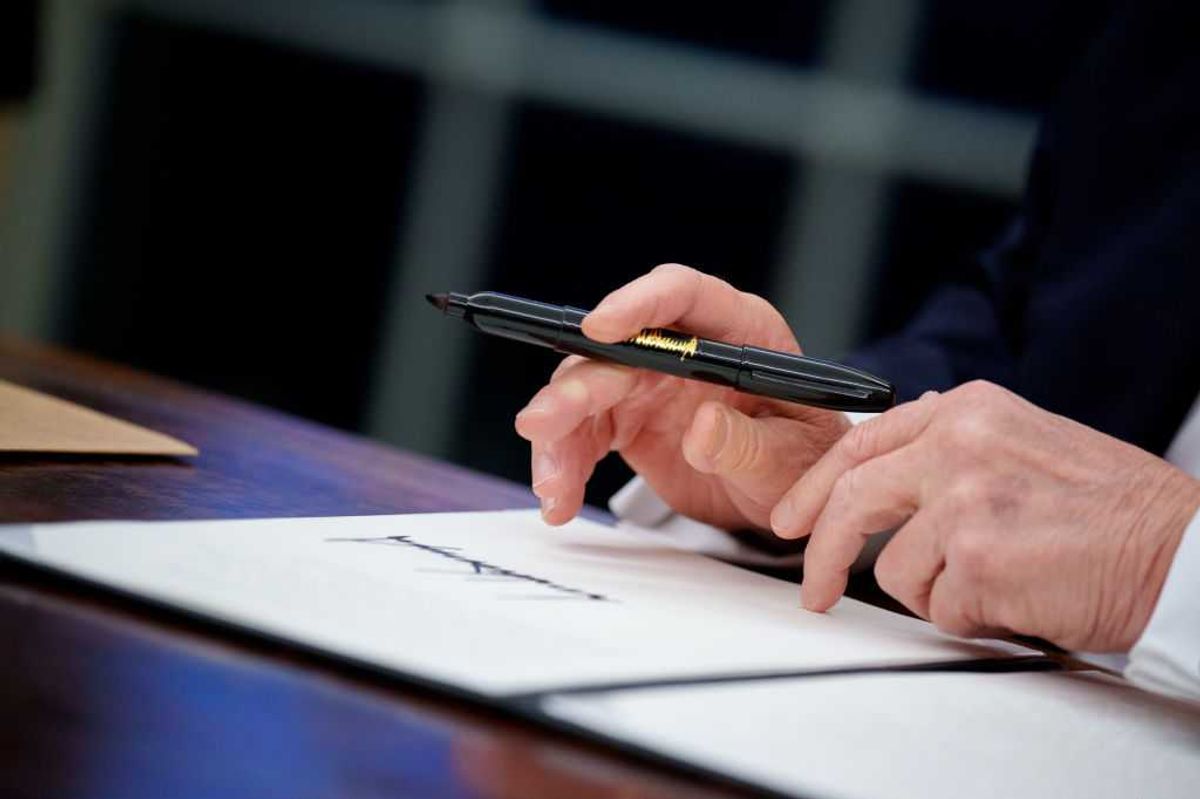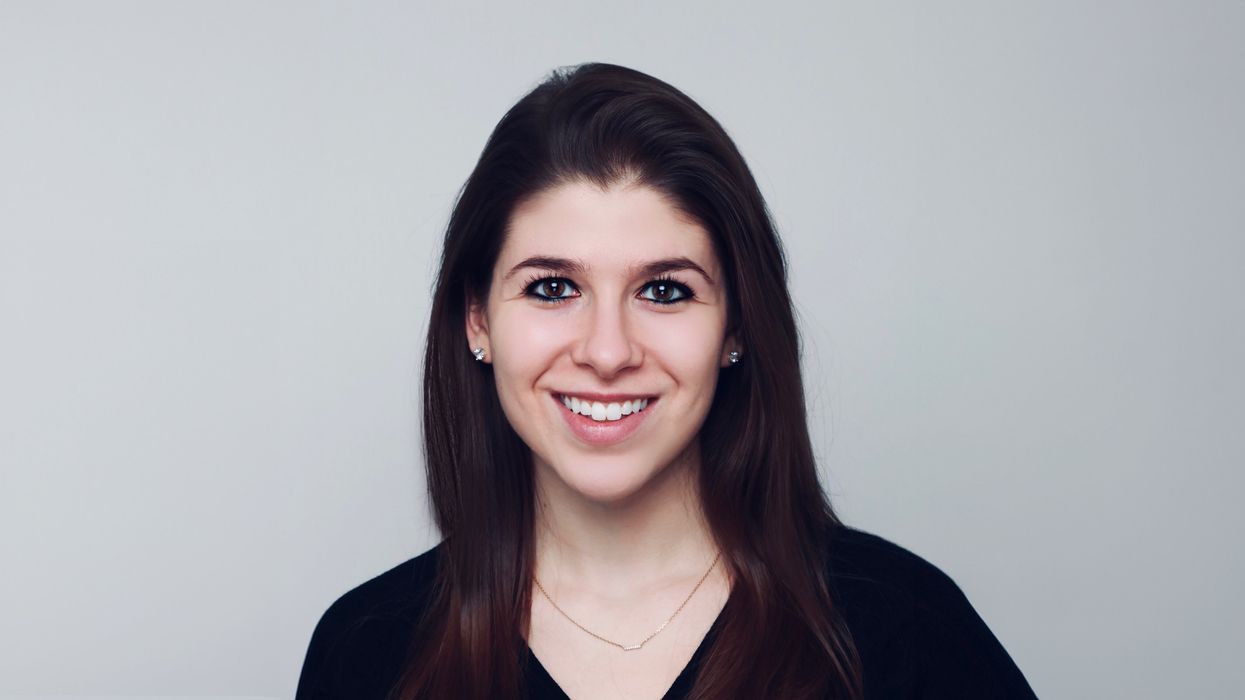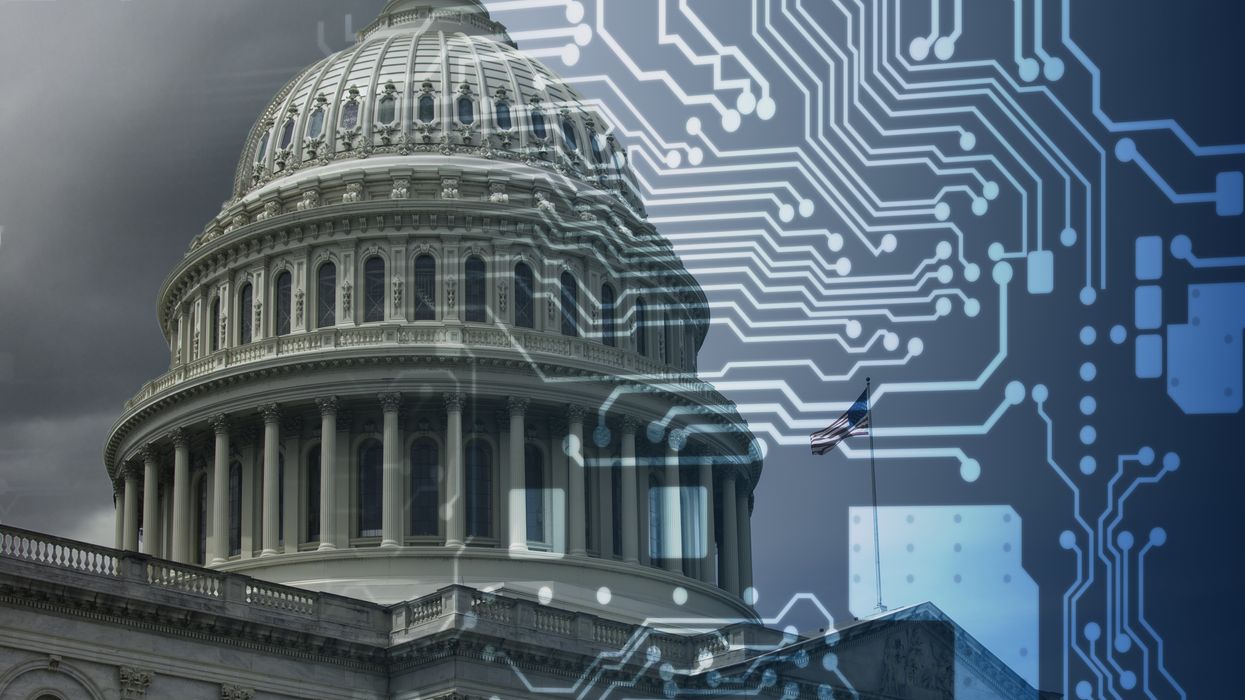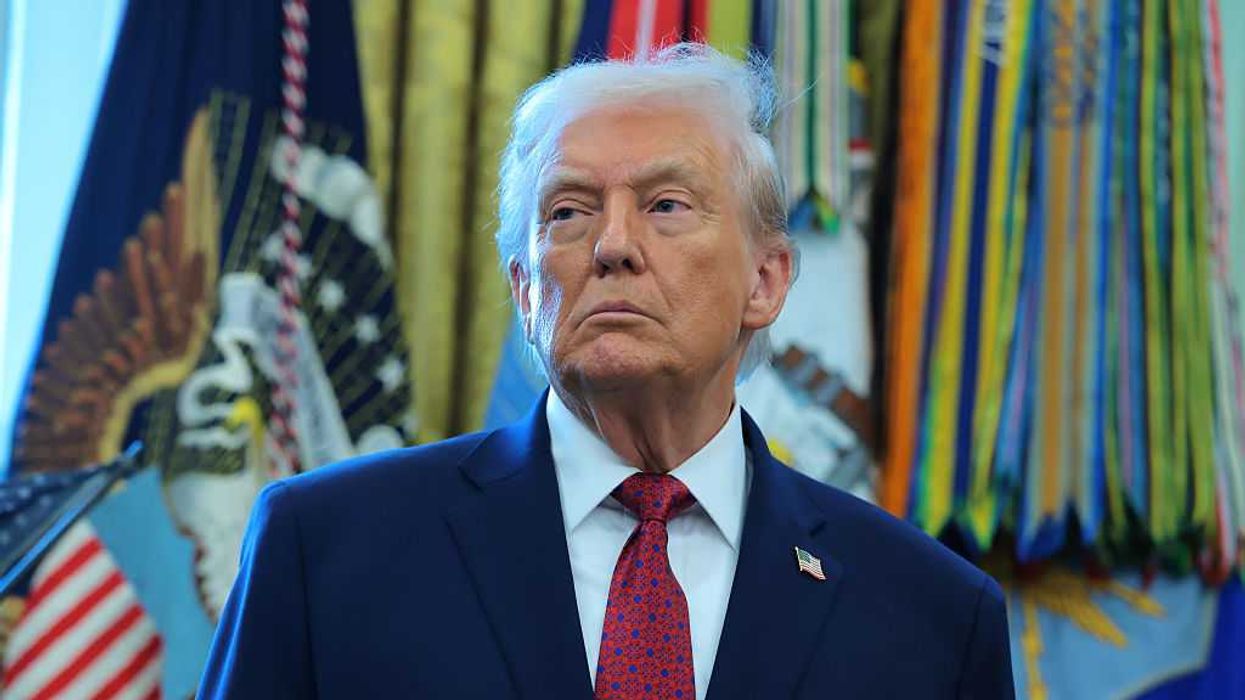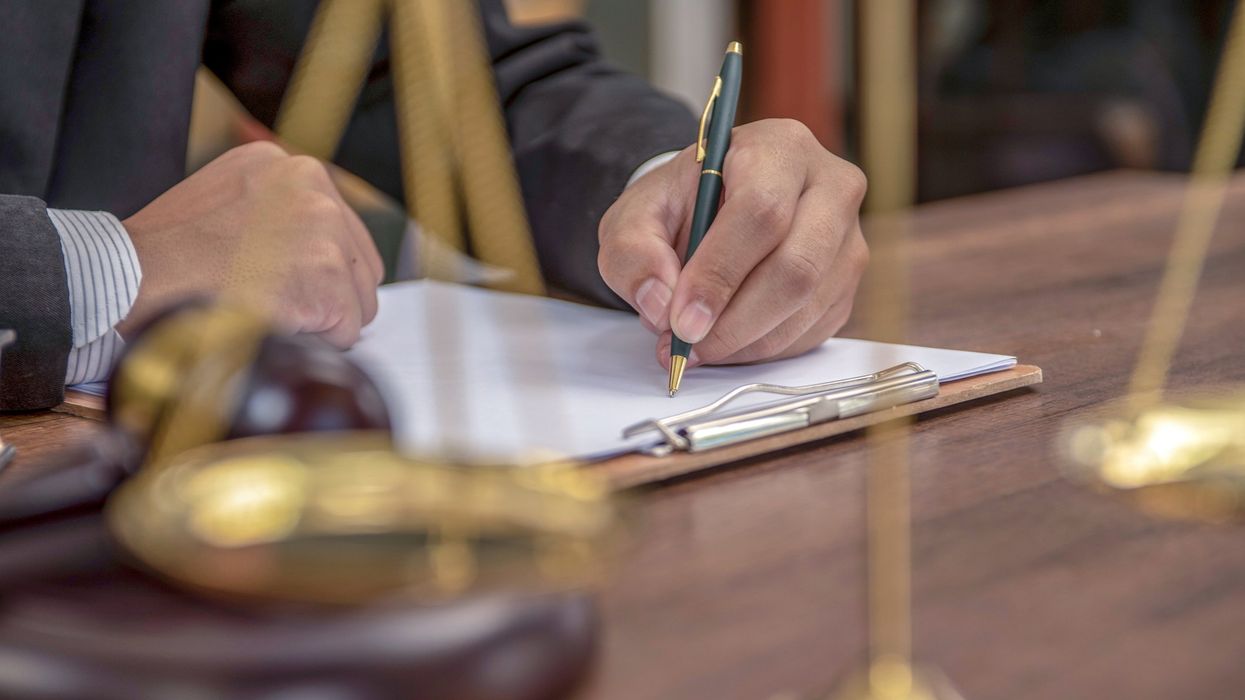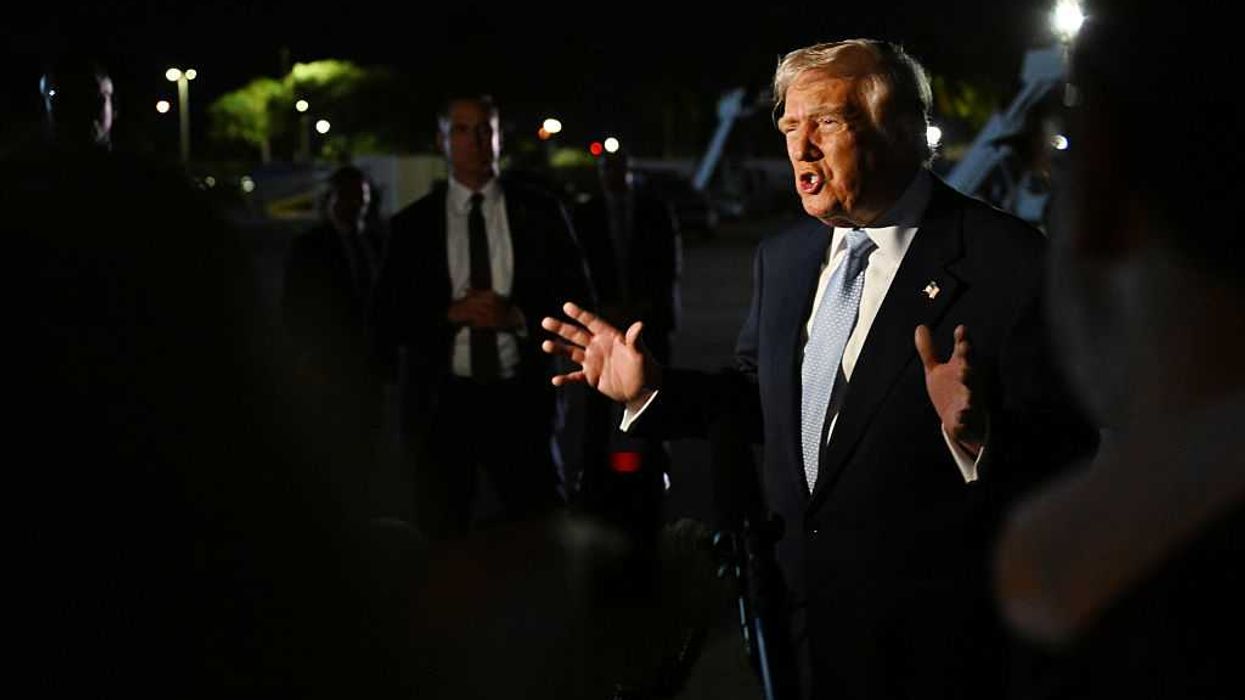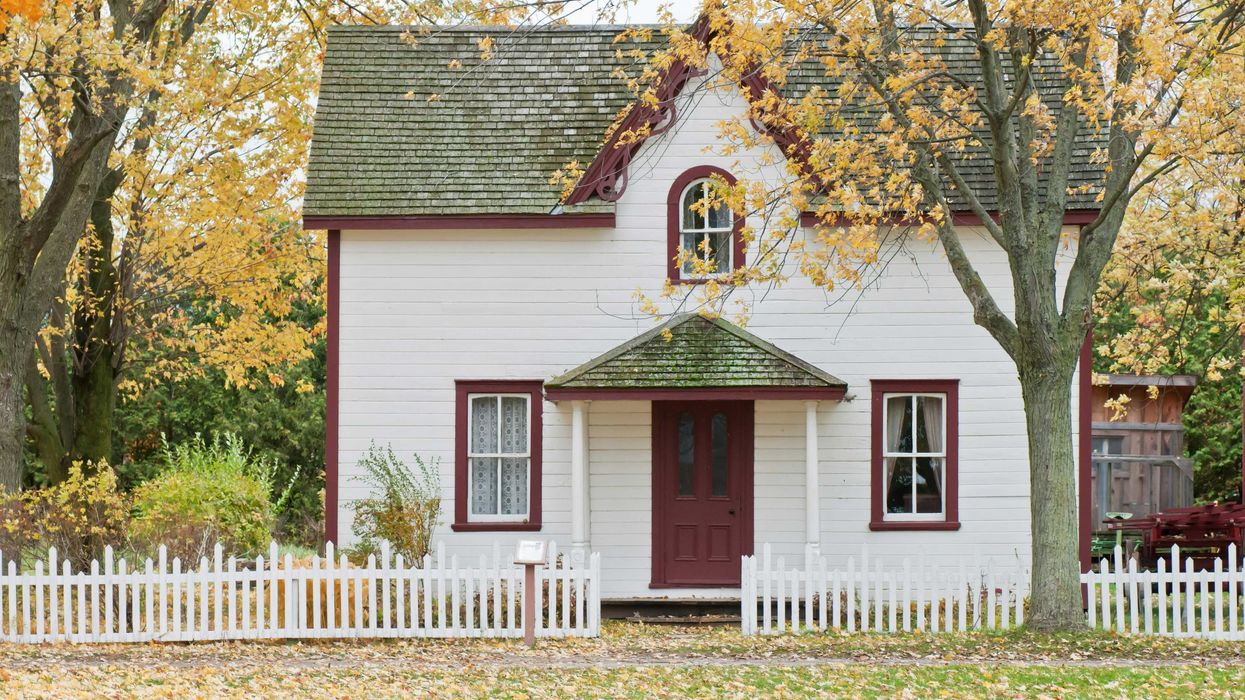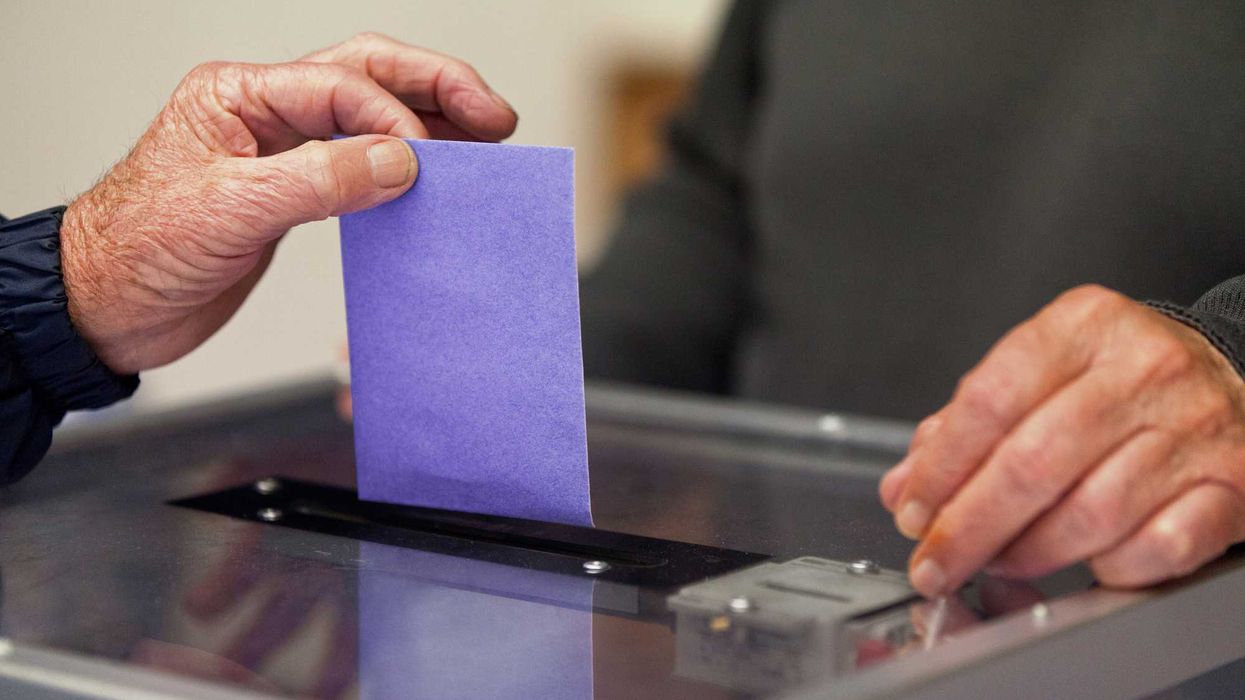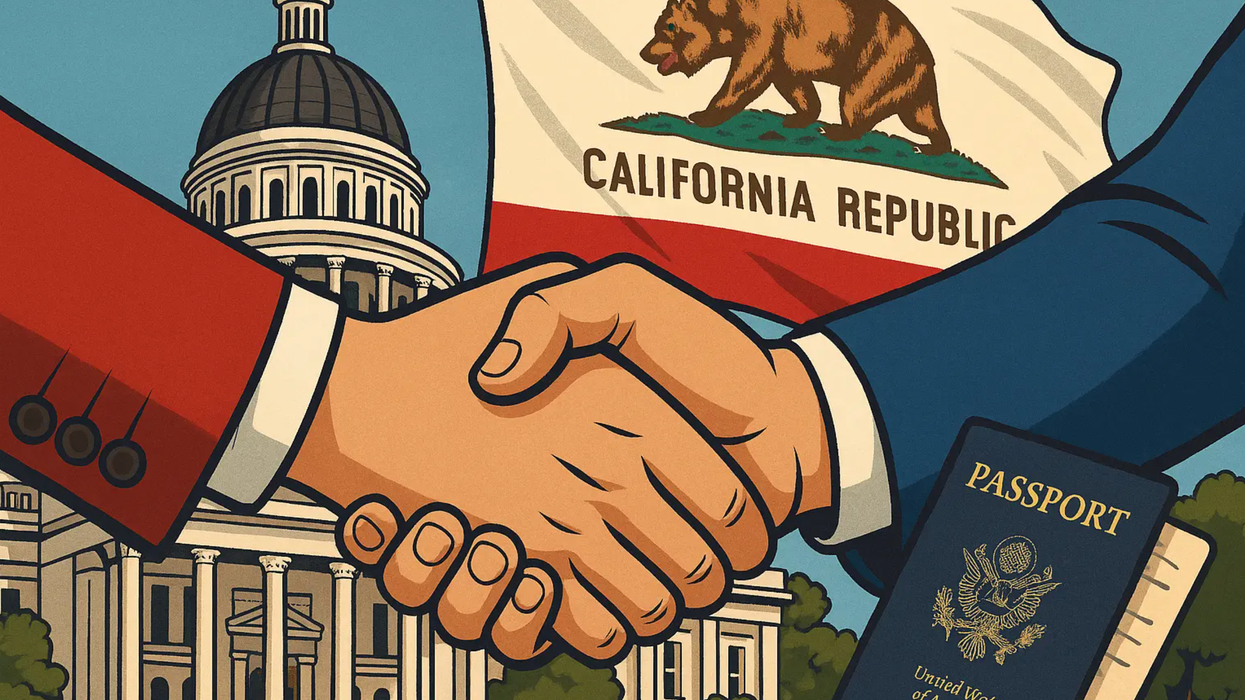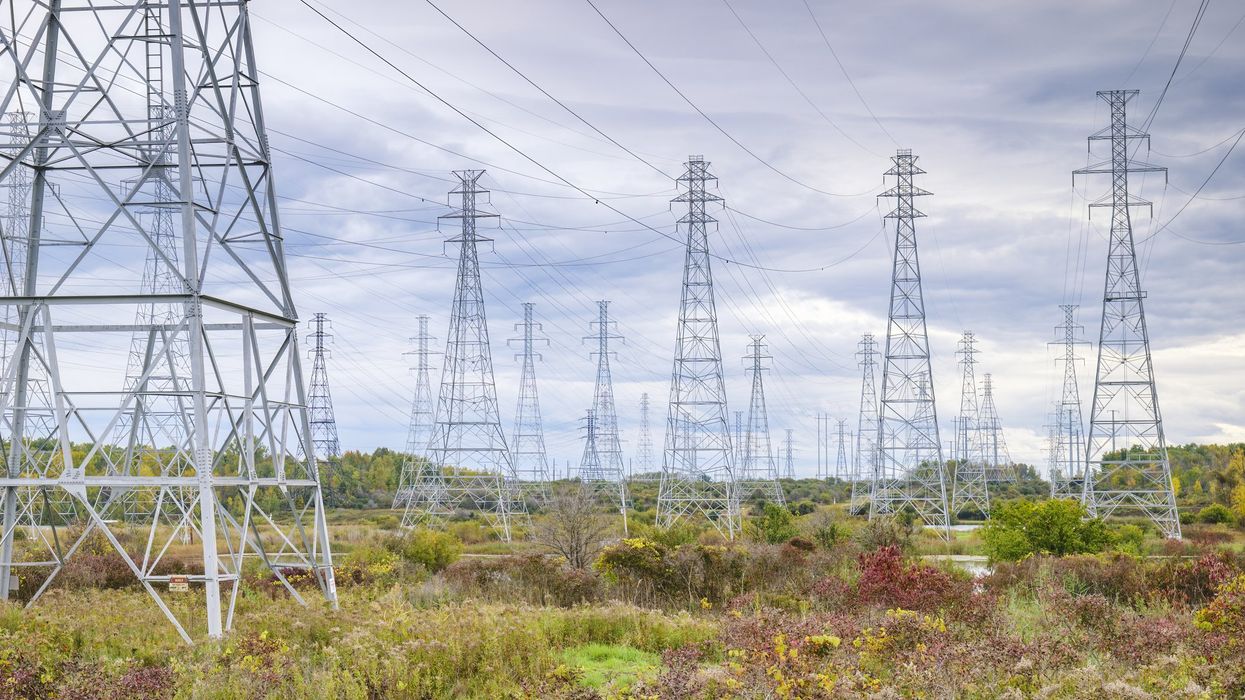Berman is a distinguished fellow of practice at The Harry Frank Guggenheim Foundation, co-editor of Vital City and co-author of "Gradual: The Case for Incremental Change in a Radical Age." This is the third in a series of interviews titled "The Polarization Project."
College campuses are often depicted as “ivory towers,” purposefully set apart from the rest of the world so that students and faculty can pursue intellectual inquiry in an unfettered way. But of course, colleges are not immune to what happens in the world beyond their gates. This includes the problem of political polarization.
Even before protests over the war in Gaza took place on many campuses during the last school year, the Associated Press reported that many American colleges fear “a return to violent protests that roiled campuses in the 1970s,” and are “re-examining how to protect free speech while keeping students and employees safe in a time of political polarization.” The Chronicle of Higher Education grimly warns that “college leaders should be ready for protests, provocations, and lone attacks.”
As schools look to the start of classes in the fall, there are plenty of reasons to be concerned. The temperature on college campuses seems to be rising to unhealthy levels.
How serious is the polarization problem on campus? Is it possible to turn down the volume at our colleges and universities and promote reasoned discussions about politics and other complicated topics?
The Constructive Dialogue Institute was founded by Jonathan Haidt and Caroline Mehl in 2017 to address these questions. The institute seeks to combat campus polarization by “equipping the next generation of Americans with the mindset and skill set to engage in dialogue across differences.”
I sat down with Mehl to talk about how we can improve our civic culture. The following transcript of our conversation, which took place before the campus protests over the war in Gaza, has been edited for length and clarity.
Greg Berman: Your organization is predicated on the idea that there is a growing problem of polarization in our country. What makes you think that polarization is growing? How do you respond to people who would argue that things were worse in the 1960s or during the Civil War period?
Caroline Mehl: There are a lot of different data sources that are tracking different types of polarization, and most, if not all, of them have been pointing to the fact that polarization has been increasing over the last few decades. You can think about polarization in terms of the polarization of elites, like members of Congress, and you can also think about polarization of Americans, like the voters. There is clear data that, over the last few decades, polarization of members of Congress has been increasing, based on legislative voting patterns. More and more politicians are voting along party lines, and there isn't as much cross-partisan support for policies as there used to be.
When you look at actual Americans, there has also been rising polarization among political partisans. The ideological polarization between Republicans and Democrats is at the highest point right now than it has been in many decades. Pew tracks what they refer to as “ ideological consistency.” They find that more and more partisans will have the same views consistently across ten different political issues, as opposed to saying, "I lean this way on this issue and this way on that one." So Republicans and Democrats will have consistent views on these ten issues, whereas in the past, there was a lot more heterogeneity across those different issues.
The other major measure that we think about a lot is what's known as affective polarization. So far, most of what I've been talking about is ideological polarization. Affective polarization looks at the feelings that people have towards the other side compared to their own side. The rates of affective polarization have more than doubled since the 1990s.
So, there are all these different trends, and they're all showing an increase in polarization. To the question of whether it's not as bad as during the Civil War or the 1960s, I'd say that the fact that you're even asking this question is a sign that we're in the danger zone. Maybe we're not at the level of hostility that we were leading up to the Civil War, but what's happened over the last few decades is that there has been a sorting of ideological parties. In the past, there was more ideological diversity within the Republican and Democratic parties. Now there's more ideological consistency within the parties. So we have these “stacked identities” that Ezra Klein and others have talked about, where people's ethnicity, religion, and ideology are all now stacked upon each other, creating this mega identity that correlates with their political affiliation. People no longer say, "I'm a liberal Republican” or “I’m a conservative Democrat." The more that happens, the more that people see others as a threat to their way of life.
GB: I buy your analysis for those Americans who strongly identify as Democrats and Republicans. But in our most recent presidential election, which had the highest turnout in living memory, you still had roughly a third of Americans who didn’t vote. And many of those who did vote are so-called “low-information voters,” who don't really identify with either the Democrats or Republicans. How do you think about those people? Are those people polarized as well?
CM: What I was describing really applies to partisans. The majority of Americans, as you say, are actually not so polarized. I’m sure you are familiar with the idea of “ the exhausted majority.” The exhausted majority includes people who are not very informed, who don't show up to the polls, who are exhausted by all the argumentation and want politicians to work across party lines to get things done. Part of what’s happening is that the extreme partisans on both sides are the ones who are becoming more extreme, and they're also growing more and more vocal, partially due to the role of social media. There's this toxic feedback cycle where social media elevates the most extreme and the most outrageous voices. It creates a perception that "Everyone who's a Republican thinks this," and "Everyone who's a Democrat thinks that." That's actually masking the reality that most Americans are actually not extreme and not every partisan is as extreme as the most extreme within that group.
But that's not to say that we should be complacent. Because, unfortunately, this vocal minority is playing an outsized role in shaping our politics at a national level. The way that our electoral system operates helps further this dynamic. Those who are most vocal and most engaged are the ones who are showing up at primaries. Therefore, politicians are campaigning in a particular way, posturing in a particular way, to appeal to the most extreme voices in their party. So extreme voices are actually having an outsized role in who is being elected to public office.
GB: In an interview with the Philanthropy Roundtable, you said, "There's a very clear path from having contempt for others to dehumanizing them and, ultimately, being willing to commit violence against them." To play devil's advocate for a second, I do see lots of Democrats saying bad things about Republicans and Republicans saying horrible things about Democrats online, but when I go outside, I don't really fear that we're going to see clashes in the street between Democrats and Republicans. How real is the threat that polarization leads to violence in the real world?
CM: There's a difference between political violence and civil war. I don’t think civil war is something that we should be that concerned about. But in the last five years, there has been a big spike in political violence, particularly coming from the political right. I’m not an expert in political violence. Most of what I've read is by Rachel Kleinfeld at Carnegie. She says one of the key characteristics of a country that ends up in civil war is having really weak democratic institutions. In the United States, even though our democratic institutions are starting to wobble, they're still far stronger than other countries. So I'm not so concerned about civil war anytime soon.
But what has been happening, particularly among the political right, is that political violence is becoming more and more mainstream. Political elites are normalizing the idea that violence is okay. Some of the things that you hear politicians saying today, they would be completely shut down and de-platformed if they said those same things even fifteen years ago. You're seeing high-profile acts of violence like the attack on Nancy Pelosi's husband, for example. And you’re also seeing a rise in threats of violence against school boards and mayors. So there has been a rise in political violence, even though it hasn't risen to the level of the 1960s.
GB: There has been a lot of media coverage in recent years about free speech on campus, and particularly the idea that right-wing viewpoints have become difficult, if not impossible, to express at certain colleges. You do a lot of work with universities. How would you characterize the campus environment these days?
CM: I'd say in some ways things are getting better and in some ways things are staying the same. I think that the problems really started to accelerate around 2015. Between 2015 and maybe 2022, you had all these high-profile incidents of student protests, shutting down speakers, things like that. Surveys show that a lot of students feel uncomfortable talking about sensitive topics and that this tends to be more common around political minorities. So if you're in a deep red state and you're a Democrat, then you feel less comfortable talking about your views and vice versa. In general, more college campuses tend to be liberal, so more conservative students feel uncomfortable speaking up.
When these issues began to emerge, a lot of college leaders seemed to be taken by surprise and unsure of how to move forward. A lot of administrators either didn't respond or they went along with these student demands and student protests. What I've been seeing in the last year is that a lot more university leaders have been taking a firmer stance. They are saying, "Well, actually, academic freedom is critical to the mission of this institution, and therefore, we're going to speak out against some of these actions."
A few months ago, there was a high-profile incident at Stanford Law School where a judge was shouted down, and the law school dean wrote a very strong memo arguing about the importance of the First Amendment and explaining why this is critical to the institution as a whole. Since then, a number of other universities have taken similar strong stances to stand in support of academic freedom. In our own work, we're getting more and more requests from universities interested in working with us to promote better dialogue on campus.
GB: I want to drill down and talk a little bit about some of the potential causes of polarization. You mentioned social media before. I don't know if you've read Amanda Ripley, who talks about “ conflict entrepreneurs ” — people whose business model relies on generating conflict. From Trump on down to your average Twitter/X troll, I'm wondering how much blame you place at the feet of conflict entrepreneurs. Or are they more symptom than cause?
CM: Polarization is very complex, so it's hard to say that there's one specific thing that is causing it. Peter Coleman is one of the leading experts in polarization and conflict studies. The way he talks about polarization, I think, is the best I've seen. He refers to the philosopher Karl Popper's framework of thinking about whether an issue is a clock problem or a cloud problem. A clock problem is very predictable and linear. If a clock breaks, you can open up the clock, figure out what gear is off, and then fix the clock. It's pretty straightforward. Cloud problems are a lot more amorphous. They're hard to predict, they move very quickly, and they change constantly. Polarization is much more of a cloud problem than a clock problem. There are a lot of factors that have contributed to the current situation in the United States. Many of the trends that have led us to this place predate the introduction of social media.
But social media is one of many forces that have been amplifying the problem. In particular, there are all these actors on social media who are spreading misinformation and spreading outrage. Social media platforms are designed to promote engagement. We know that the content that is the most inflammatory is what drives the highest engagement. So again, we have this bizarre scenario where people who are the most extreme are getting the loudest megaphone to spread outrage through social media platforms, which is exacerbating this whole cycle.
GB: The last few years has seen an explosion of investment in diversity, equity, and inclusion programming within universities, nonprofits, and businesses. I'm curious to hear whether you think that this has had any impact on polarization, whether positive or negative.
CM: I think it's part of the broader set of culture issues that have been playing out in the past few years that have become really polarizing. Some of the biggest factors causing polarization today are identity-based issues. Issues that touch on identity tend to be the things that are the most difficult to talk about and the things that bring people furthest apart. So we’ve seen a rise in advocating for more DEI, and we’ve seen a reaction against that.
GB: You have said that the work of the Constructive Dialogue Institute has its roots in behavioral science research. What do you mean by that?
CM: Our goal is to address polarization by translating behavioral science research into accessible evidence-based educational tools. When we first began, the higher-ed classroom was our target audience, and we offered educational tools that professors could adopt into the curriculum. What we have been doing over the last year is expanding outwards to think more about the culture overall within an institution. We want to try to shift institutional norms and create organizational cultures that support bridging across differences.
But right now our core offering is our online learning program, Perspectives, which seeks to shift the attitudes that people have towards those who are different from them and give people very practical skills for how to navigate difficult conversations. We begin by teaching psychological concepts in order to help normalize how our minds work, and how we're inherently wired, to move away from blaming people for behaving in certain ways. So our educational platform explores dual process theory — the idea that our minds are divided into two systems, automatic and controlled, and that these two systems can lead to a variety of cognitive biases that can warp our reasoning.
Basically, we are helping people realize that we should be more intellectually humble because we might be falling prey to cognitive biases as we're thinking about certain issues. We are also helping people move away from thinking of the opposing political party as bad, evil, stupid, et cetera. We help them understand that other people might be falling prey to cognitive biases rather than demonizing them or assuming that they're evil.
Then we introduce moral foundations theory, which is the theory that my co-founder Jon Haidt is well known for, which explores the psychology behind how we form our different worldviews. Moral foundations theory explains that we all have fundamental building blocks for morality in our minds and then we all combine them in different ways. It helps us recognize that people who have different beliefs than we do are often just as sincere as we are. Their values are just leading them in a different direction. Our research has shown that teaching these different concepts does help reduce affective polarization.
GB: You mentioned that your organization has been evolving in recent months. Where are you going next?
CM: We are really trying to move beyond the classroom to a more campus-wide model. We're finalizing the final partnerships, but we're on track to have between twenty-five and thirty campuses total who are partnering with us.
For example, we have created a partnership with the State Council of Higher Education for Virginia. We recruited a cohort of 12 public colleges in Virginia, ranging from small rural colleges to large community colleges to Virginia Tech and George Mason. What we've done with them is a more hands-on, deeper dive. In order to be part of this program, we needed them to have senior leadership sign up and create a working group of key stakeholders to show that they were committed to doing this work.
The next step is that we did an asset-mapping exercise to get a sense of what's going on on campus. Where are the challenges? Where are the opportunities? Based on that work, we developed implementation plans for each campus, and the implementation plan includes a few key offerings. The first is our online learning program, Perspectives. Different campuses are implementing it in different ways. Some are incorporating it into semester-long or year-long courses for first-year students. Some are incorporating it into orientation. And some are incorporating it into gen ed courses.
We have also developed a suite of trainings for staff, faculty, and student leaders. We recognize that it's not enough to just train students, we need to train the adults around them to be able to create spaces that welcome diverse perspectives, that welcome discourse about controversial issues. The last piece is that we also are organizing a community of practice where, every few months, the key stakeholders come together and they talk about lessons learned and best practices across different campuses. Our goal is to replicate the kind of model that we're doing with Virginia in states across the country.
GB: I wouldn't underrate the difficulty of what you are trying to do. Changing the culture of an institution that has existed for a long time, and where you are an outsider … that’s really hard. I think it is going to take a generation, at least, for you to succeed.
CM: It's absolutely multi-year work. And it really requires the university to be committed to doing the work; otherwise, it's not going to be sustainable.
GB: You recently put out a piece called “ Building Bridges in the Context of Inequality.” Do you think that the kind of work you're doing to encourage civil dialogue inhibits people's ability to advocate for systemic change?
CM: I think it does not. If anything, I think it makes people more effective. I think part of the challenge, especially on campuses, is that issues of free speech and anti-racism have been pitted against one another in a binary way of thinking. It's either we have free speech or we have anti-racism. The framing of those two things as being in opposition is a recipe for ongoing conflict. What our work is really intended to do is to shift that binary to a both/and framework. We want to encourage more dialogue so we can make progress on these issues. The goal of our work is to promote dialogue and to empower people to have conversations about incredibly difficult issues. It's not meant to be a way to say, "Let's just accept the status quo."
GB: Reading between the lines, my perception is that the Constructive Dialogue Institute is trying to dance between the raindrops of the culture wars. I don't know whether you saw it, but not too long ago the New Yorker ran a piece about the Foundation Against Intolerance & Racism. In the piece, one of the interviewees says that there is basically no marketplace among the donor class for moderation anymore. I’m wondering what you think of this critique. Part of your job is to go out into the philanthropic marketplace to fundraise. Do you think it is hard to raise money for moderate causes these days?
CM: I haven't thought about it in that way. It's not like people will say, "Oh, this doesn't align with my view of the world, that's why I'm not interested in funding this." It's more that donors who have a partisan agenda are not necessarily prioritizing this kind of work. We try to identify funders who care about polarization.
GB: Are you finding that there is a rump of funders who are interested in this as an issue?
CM: There is, but it's definitely limited. Before the 2016 election, the space was very underdeveloped — I wouldn't even call it a space — there were just a few actors that were doing this kind of work. Then after the 2016 election, there was an explosion. All of these different small organizations popped up and said, "We want to do something about this." So the first few years after that was chaos, where every month there was a new organization popping up and no one knew who the funders were, and the funders didn't know who the organizations were. It was just total free-for-all.
Around 2020, there started to be a field emerging where the actors were all starting to become more aware of one another and starting to coordinate. A major development was the creation of an organization called New Pluralists, which is a funder collaborative. They're bringing in more funders. But what I have found is that compared to other issues, the universe of funders who are interested in supporting this work is pretty limited, especially given the scale of the problem. So that's been pretty surprising and definitely distressing.
This article originally appeared on HFG.org and has been republished with permission.
